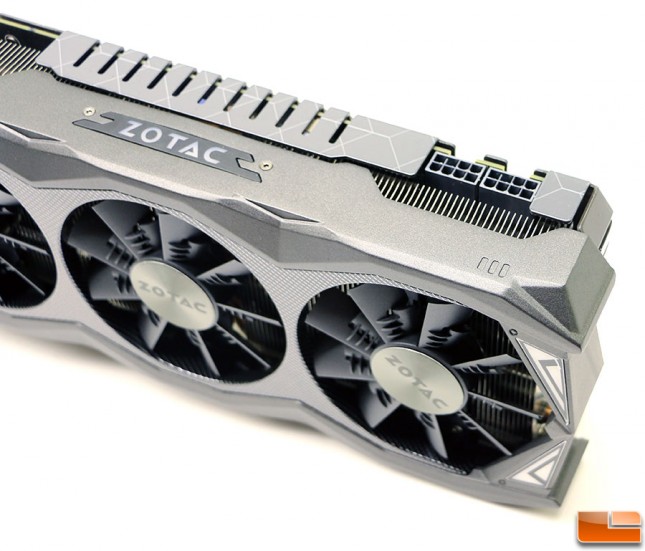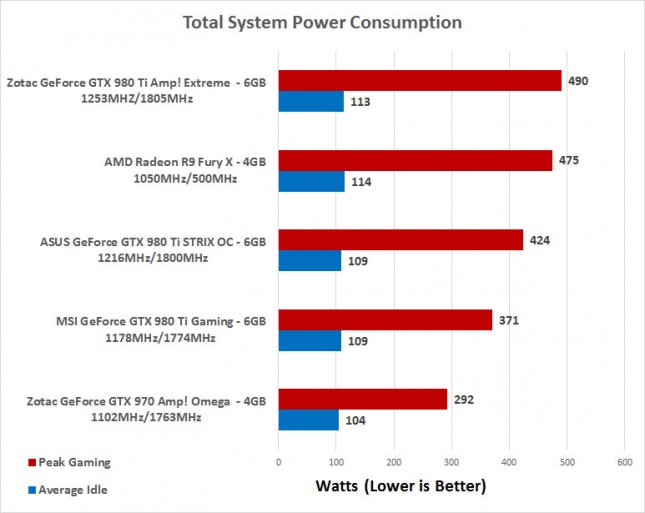NVIDIA GeForce GTX 980 Ti Video Card Roundup ASUS, MSI and Zotac
Power Consumption
For testing power consumption, we took our test system and plugged it into a Kill-A-Watt power meter. For idle numbers, we allowed the system to idle on the desktop for 15 minutes and took the reading. For load numbers we ran Battlefield 4 at 3840×2160 and recorded the average idle reading and the peak gaming reading on the power meter.
Power Consumption Results: When we first made this graph we thought we made a mistake and re-did all the power testing on the GeForce GTX 980 Ti cards. After a couple hours and being certain we made a mistake we found that our second set of numbers was at most 1 Watt off from the original set. The Zotac GeForce GTX 980 Ti Amp! Extreme Edition uses ~120 Watts more power then gaming than the MSI GeForce GTX 980 Ti Gaming 6GB. The AMD Radeon R9 FuryX used less power than the Zotac GeForce GTX 980 Ti Amp! Extreme Edition! (Sorry, not too many times the Fury X was doing better than the GTX 980 Ti’s and had to slip that in there. GPU-Z shows the GPU core voltage being the same, so we guess the higher clock speeds on the Zotac card needs that much more power to run at those speeds. The ASUS GeForce GTX 980 Ti 6GB STRIX Gaming OC finished right between the two GTX 980 Ti cards it was competing against.
When it comes to why we are seeing somewhat odd power results like this it is likely due to a combination of factors. You have the higher clock speeds, different GPU power leakages, very different board components (directly impacts efficiency), and different fans. The Zotac card we tested likely has a GPU with higher leakage levels, a less efficient power phase design and top of the fact that the fans and power phases were working harder since the card is running at higher clocks and generating more heat. GPU-Z is only reporting what its being told, so there could be some slight differences in actual voltages also. Too many variables, but our numbers are spot on within 1W from repeated testing over multiple days.
Let’s wrap this review up!


